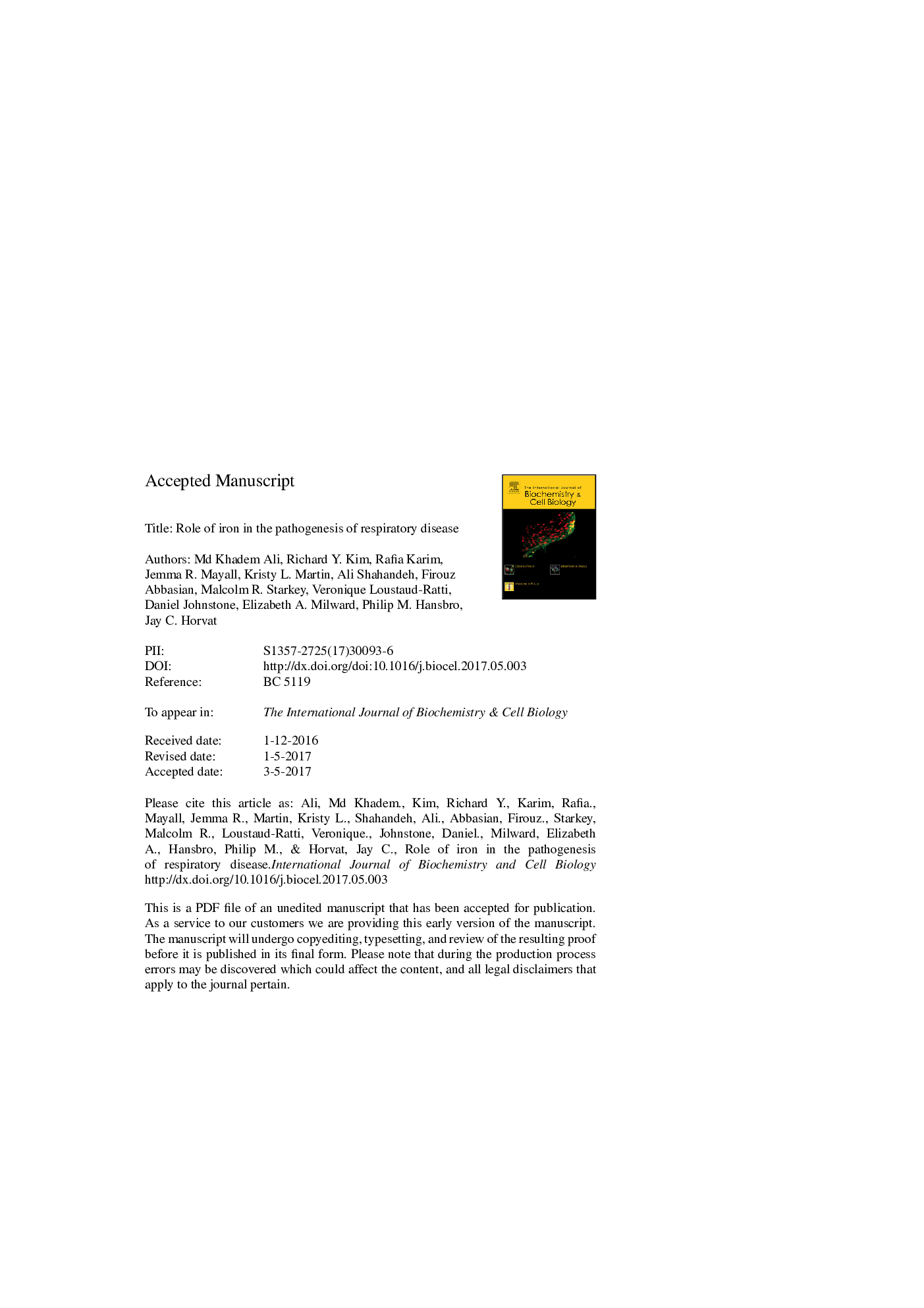| Article ID | Journal | Published Year | Pages | File Type |
|---|---|---|---|---|
| 5511364 | The International Journal of Biochemistry & Cell Biology | 2017 | 44 Pages |
Abstract
Iron is essential for many biological processes, however, too much or too little iron can result in a wide variety of pathological consequences, depending on the organ system, tissue or cell type affected. In order to reduce pathogenesis, iron levels are tightly controlled in throughout the body by regulatory systems that control iron absorption, systemic transport and cellular uptake and storage. Altered iron levels and/or dysregulated homeostasis have been associated with several lung diseases, including chronic obstructive pulmonary disease, lung cancer, cystic fibrosis, idiopathic pulmonary fibrosis and asthma. However, the mechanisms that underpin these associations and whether iron plays a key role in the pathogenesis of lung disease are yet to be fully elucidated. Furthermore, in order to survive and replicate, pathogenic micro-organisms have evolved strategies to source host iron, including freeing iron from cells and proteins that store and transport iron. To counter these microbial strategies, mammals have evolved immune-mediated defence mechanisms that reduce iron availability to pathogens. This interplay between iron, infection and immunity has important ramifications for the pathogenesis and management of human respiratory infections and diseases. An increased understanding of the role that iron plays in the pathogenesis of lung disease and respiratory infections may help inform novel therapeutic strategies. Here we review the clinical and experimental evidence that highlights the potential importance of iron in respiratory diseases and infections.
Keywords
TRALIferroportinDcytBduodenal cytochrome BPAPDMT1HIF-1αIFN-γARDSRBCLFRIPFNSCTransferrinTFRFPNRed blood cellstransfusion-related acute lung injuryIronFBIinterferon-γLung diseaseChronic obstructive pulmonary diseaseCOPDHost–pathogen interactiontumor necrosis factor-αNon-small-cellAcute respiratory distress syndromehypoxia inducible factor-1αInfectionTNF-αidiopathic pulmonary fibrosisCystic fibrosisLactoferrinDivalent metal transporter 1Immunitytransferrin receptorLactoferrin Receptor
Related Topics
Life Sciences
Biochemistry, Genetics and Molecular Biology
Biochemistry
Authors
Md Khadem Ali, Richard Y. Kim, Rafia Karim, Jemma R. Mayall, Kristy L. Martin, Ali Shahandeh, Firouz Abbasian, Malcolm R. Starkey, Veronique Loustaud-Ratti, Daniel Johnstone, Elizabeth A. Milward, Philip M. Hansbro, Jay C. Horvat,
